In January 2009, I was introduced to a developmental term on a personal level as an optometrist explained yet another severe delay my son was battling.
Hearing it from an optometrist one would assume it concerned his visual acuity which refers to how clearly he saw things and whether or not he needed glasses to fix the visual problem. But this wasn’t about 20/20 vision. My son’s eyes were doing exactly what they should be doing.
What my son was dealing with was a visual perception problem. A problem between what the eyes saw and how the brain translated the information. As the optometrist put it, “The hardware is a there but there is a software problem.”
I witnessed that if a child is unable interpret information correctly, reading, writing, and basic daily tasks may be close to impossible to do!
Immediately I began working on creating visual perception activities that he and I could use to help correct this problem. It was through a great deal of prayer and these activities and worksheets that later became the ABCJesusLovesMe Visual Perception Curriculum that we were able to correct the visual perception problems that my son had and to train the brain the to correctly and effectively make sense of what was seen.
But I know my son isn’t alone. While not all will have severe issues, all children need to strengthen their visual perception skills.
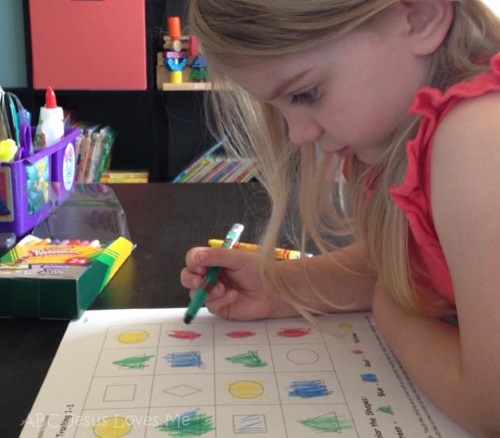 image by erin
image by erin
Visual Perception skills allow a child to look at an object, understand what it is, notice how it is similar to other objects, discover how it is different from other objects, and recognize if it is upside-down or right-side up, if a part of it is missing, how big it is, how far away it is from them, and how far away it is from other objects in the environment. These skills are imperative to reading, completing puzzles, cutting, writing, and other basic daily tasks. One website shared that “research has indicated a positive correlation between visual perception and academic performance in writing and math.”
Consider the Visual Perception Curriculum to be a fun way to do eye and brain exercises! Each set of worksheets include a what, why, and how as well as play-based ideas to extend learning.
Purchasing this curriculum includes exclusive access to helpful videos explaining how to teach each of the visual perception steps to a child. Also, enjoy watching a live video of how I introduce each set of worksheets to a preschooler. QR codes and simple passwords are provided in this curriculum to easily view each video.
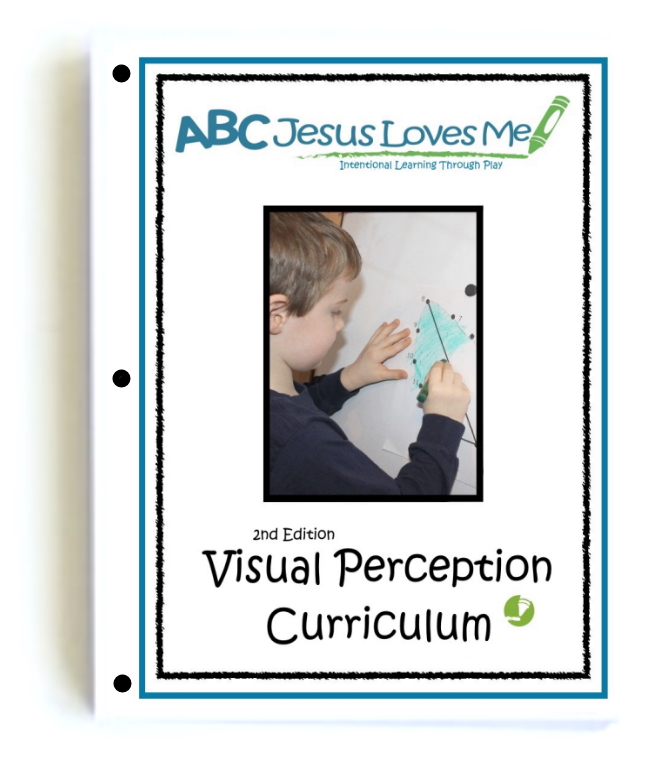
Add a fun, fine-motor aspect to the worksheets by using buttons, candy, and blocks to mark correct answers.
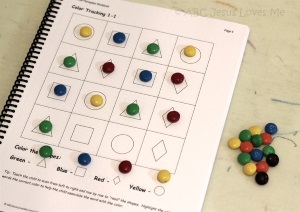 Using M&Ms, instruct the child to place the corresponding M&M's on the correct shape.
Using M&Ms, instruct the child to place the corresponding M&M's on the correct shape.
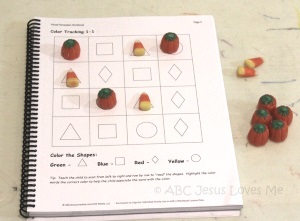 Using candy corn as triangles and candy pumpkins as circles, place the correct candy on the worksheet.
Using candy corn as triangles and candy pumpkins as circles, place the correct candy on the worksheet.
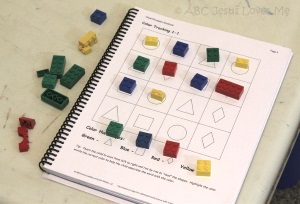 Using Legos, instruct the child to place the corresponding Legos on the correct shape.
Using Legos, instruct the child to place the corresponding Legos on the correct shape.
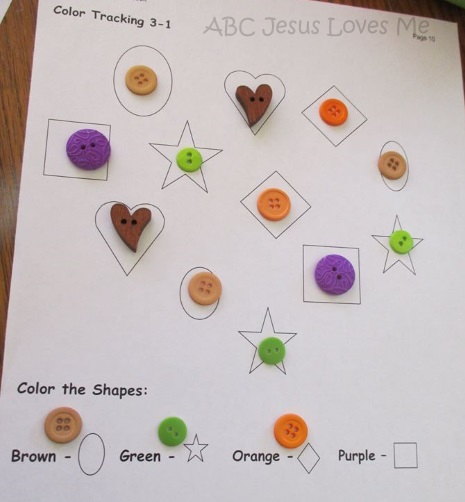 Using buttons, instruct the child to place the corresponding button on the correct shape. (Image shared by Jona)
Using buttons, instruct the child to place the corresponding button on the correct shape. (Image shared by Jona)
What's Missing Pictures
- Complete 2D shapes
- Complete Pictures
- Show only part of an object and have the child guess what it is
Object Pictures Matching - i.e., match a picture of fork with a real fork
Match shapes and pictures to silhouettes
Create a sequence and have the child repeat it.
Play Bingo